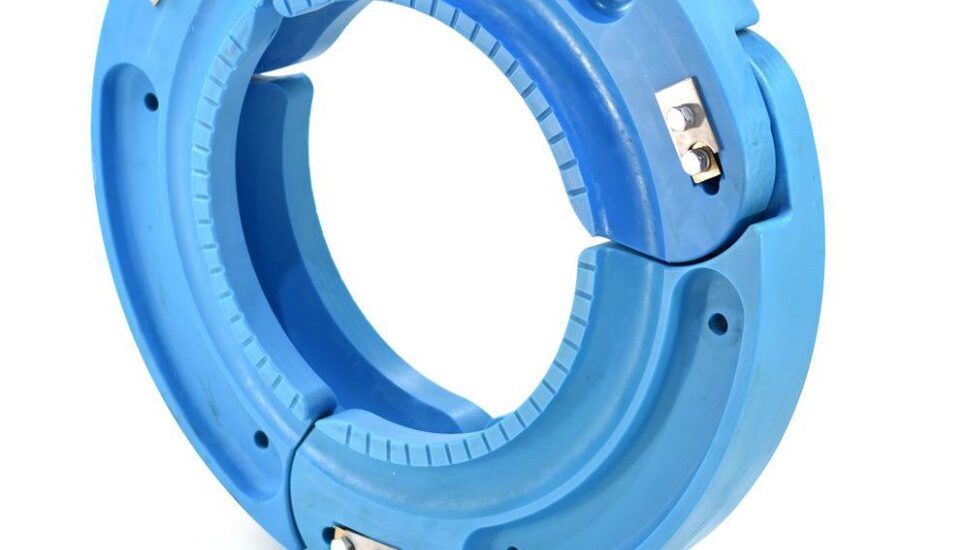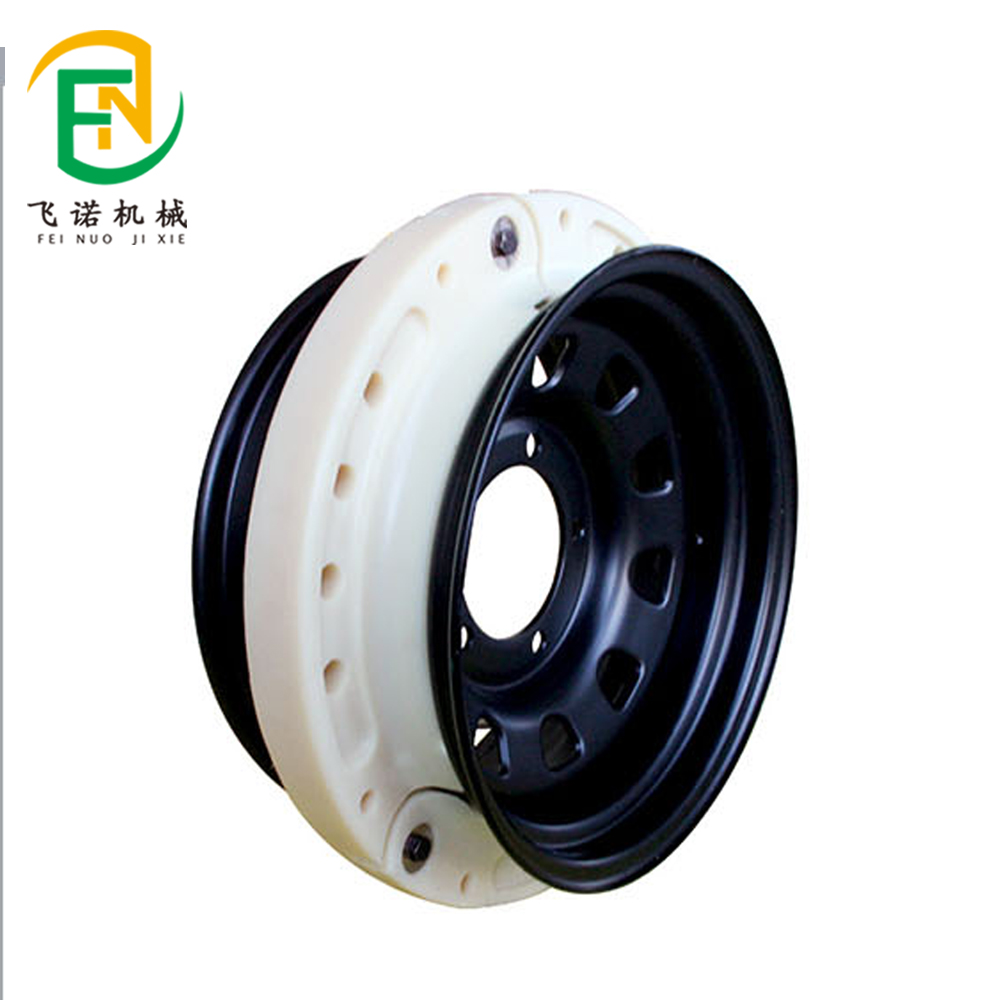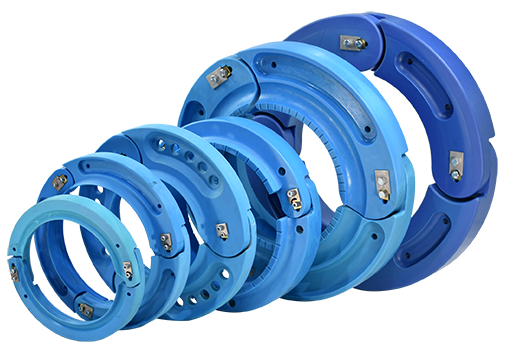- May 12, 2025
- Posted by: feinuojixie
- Category: Injection Molding News


Imagine driving down a remote highway when suddenly, you hear the unmistakable thump of a tire blowout. There’s no cell service, no spare tire, and no help in sight. This is where a run flat insert proves its worth. Unlike traditional tires or even run-flat tire systems, a run flat insert is designed to support your vehicle even after complete air loss, allowing you to drive to safety rather than being stranded.
Whether you’re a weekend off-roader, a long-distance traveler, or part of a critical emergency response team, the ability to keep moving in the face of tire failure is more than just convenient—it can be lifesaving. Run flat insert offers peace of mind that modern mobility demands. In this guide, we’ll explore everything you need to know to make informed decisions about this powerful upgrade for your vehicle.


What Is a Run Flat Insert and How Does It Work?
A run flat insert is a high-strength ring or support structure mounted inside a tire, designed to maintain tire shape and vehicle control even after total air loss. When a tire is punctured or shot out, the insert bears the weight of the vehicle, preventing the wheel rim from touching the road. This allows you to continue driving—often for up to 50 miles or more—at a reduced speed.
Run flat insert is commonly used in military vehicles, armored transport, and off-road expedition rigs. Unlike a run-flat tire, which has reinforced sidewalls, an insert works by physically replacing the function of air pressure in emergencies. It offers a more robust, reusable solution, especially under extreme conditions.
The History and Evolution of Run Flat Insert
The concept of run flat insert has its roots in military engineering. During World War II and the Cold War era, the need to move vehicles under fire or through hostile terrain sparked the development of tire support systems. Early versions were bulky and limited in performance, but they laid the foundation for today’s advanced materials and designs.
Over the decades, the evolution of polymers, thermoplastics, and composite reinforcements has made run flat insert lighter, stronger, and easier to install. Today, they are not only found in military convoys but also in high-end civilian SUVs, armored bank vehicles, and off-road rescue trucks.
Key Benefits of Using Run Flat Insert
The advantages of equipping your vehicle with a run flat insert go far beyond avoiding a tow truck. Here are some of the key benefits:
-
Safety: Prevents sudden loss of vehicle control during a blowout.
-
Mobility: Allows you to keep driving even after tire damage.
-
Convenience: Eliminates the need to carry a spare or change a tire in dangerous conditions.
-
Durability: Can withstand harsh terrain, gunfire, and punctures.
-
Cost-Effective: Reduces downtime, service calls, and potential damage to rims or suspension.
These benefits are particularly valuable for drivers operating in remote areas, security vehicles, or industries where failure is not an option.
Different Types of Run Flat Insert and Their Applications
Run flat insert is not one-size-fits-all. Here are some of the most common types and their ideal applications:
-
Polyurethane Insert: Lightweight and corrosion-resistant. Best for civilian off-road use and light trucks.
-
Steel-Reinforced Insert: Extremely tough. Used in armored vehicles and military applications.
-
Segmented Insert: Modular design for flexible fitting. Ideal for commercial fleets.
-
Rubber-Composite Insert: Offers a balance between performance and affordability. Great for SUVs and long-distance travelers.
Choosing the right insert depends on the environment, the vehicle’s weight, and the mission profile.
How to Choose the Right Run Flat Insert for Your Vehicle
When selecting a run flat insert, consider the following factors:
-
Vehicle Type: Heavy-duty trucks need stronger inserts than sedans or SUVs.
-
Terrain: Rocky or sandy terrain may require heat-resistant and abrasion-proof materials.
-
Speed and Distance: Some inserts are rated for only 30 miles at 30 mph, while others go further.
-
Budget: Military-grade solutions are premium-priced, but more affordable options exist for general users.
Always check compatibility with your wheel and tire dimensions. Professional installation is often recommended to ensure optimal performance.
Installation and Maintenance Tips for Run Flat Insert
Installation of a run flat insert typically involves dismounting the tire, inserting the support ring inside, and remounting the tire. The process must be precise to ensure balance and fit. Specialized tools and trained technicians are usually required.
For maintenance:
-
Inspect Regularly: Check for cracks or deformation.
-
Clean After Harsh Use: Mud, salt, and debris can accelerate wear.
-
Reinstall During Tire Changes: Reuse is possible, but only if the insert is in good condition.
Proper care ensures that your insert will function as intended when you need it most.
Run Flat Insert vs. Run-Flat Tire: What’s the Difference?
While they serve a similar purpose, run flat insert and run-flat tire are fundamentally different.
-
Run-Flat Tire: Features reinforced sidewalls. Built-in to the tire. Once damaged, it often must be replaced.
-
Run Flat Insert: Separate component inside a standard tire. Reusable and usually more durable.
Run flat insert offers greater control in severe conditions and is preferred for heavy-duty or mission-critical use. For the average commuter, a run-flat tire may suffice, but for those seeking reliability and rugged performance, the insert is the superior choice.


Real-World Scenarios Where Run Flat Insert Makes a Difference
Consider a desert rescue team navigating sharp volcanic rock where a flat tire could mean hours of delay—or worse. Or an armored convoy facing gunfire in a conflict zone. In both cases, a run flat insert allows the mission to continue.
Other scenarios include:
-
Emergency medical vehicles during natural disasters
-
Border patrol units in remote regions
-
Adventurers crossing uninhabited terrain
In all these examples, a run flat insert transforms a dangerous halt into a controlled retreat or successful mission.
Common Myths and Misunderstandings About Run Flat Insert
Let’s clear up some misconceptions:
-
“Only military vehicles need it” – Not true. Many civilian vehicles benefit from added safety.
-
“Too expensive for regular users” – Prices vary, and long-term value often outweighs cost.
-
“Difficult to install or maintain” – With the right service provider, it’s straightforward.
-
“It damages the tire or rim” – Properly installed inserts protect, not harm.
Understanding the facts helps you make a confident decision about integrating run flat insert into your vehicle setup.
Where to Buy High-Quality Run Flat Insert
Look for manufacturers or suppliers with certifications such as ISO, NATO, or DOT compliance. Trusted brands often provide warranties and support. Avoid generic, non-certified products sold online without clear specifications.
Consider contacting:
-
Specialized tire service centers
-
Off-road equipment providers
-
Armored vehicle outfitters
Request product data sheets, testing results, and installation guidelines before purchase.
Your Safety Net on the Road
A flat tire doesn’t have to mean the end of the road. With a run flat insert, you gain a strategic advantage over uncertainty, danger, and delay. Whether for peace of mind, operational safety, or real-world resilience, investing in this often-overlooked component could be one of the smartest moves you make.
So the next time you hit the road—be it the city street or the unbeaten path—ask yourself: am I ready to keep moving when it matters most? With a run flat insert, the answer is yes.
